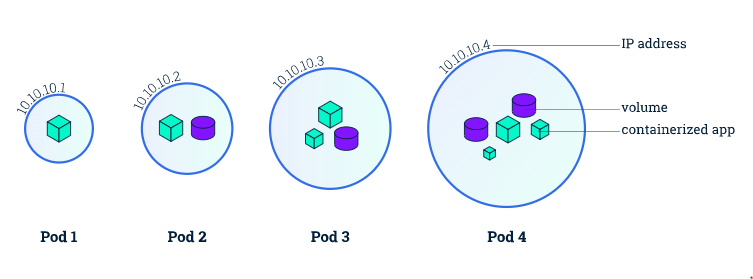What is Kubernetes and why it is important? 🚀
🌟 Kubernetes is an open-source container orchestration platform designed to automate the deployment, scaling, and management of containerized applications. It simplifies the management of complex applications across distributed environments, improves resource utilization, enhances scalability, and facilitates seamless deployment and updates.
What is the difference between Docker Swarm and Kubernetes? 🚀

🐳🚀 Docker Swarm is Docker's native clustering and orchestration tool, while Kubernetes is a more comprehensive container orchestration platform. Kubernetes offers advanced features like automatic scaling, rolling updates, and service discovery, making it more suitable for large-scale, production-grade deployments compared to Docker Swarm.
How does Kubernetes handle network communication between containers? 🚀

🌐 Kubernetes manages network communication between containers through a virtual network that each pod gets attached to. It assigns each pod a unique IP address and exposes services to communicate with other pods through DNS-based service discovery.
How does Kubernetes handle scaling of applications? 🚀

⚖️ Kubernetes handles scaling through horizontal and vertical scaling. Horizontal scaling involves adding or removing replicas of pods based on resource utilization, while vertical scaling involves adjusting the resources allocated to each pod.
What is a Kubernetes Deployment and how does it differ from a ReplicaSet? 🚀
![4. Working with Kubernetes Objects - Cloud Native DevOps with Kubernetes [Book]](https://www.oreilly.com/api/v2/epubs/9781492040750/files/assets/cndk_0401.png)
💼 A Kubernetes Deployment manages a set of identical pods, ensuring the desired number of replicas are running and handling updates and rollbacks. A ReplicaSet, on the other hand, ensures a specified number of pod replicas are running at any given time but does not handle updates or rollbacks.
Can you explain the concept of rolling updates in Kubernetes? 🚀

🔄 Rolling updates in Kubernetes involve gradually updating pods to a new version without downtime. It replaces old pods with new ones, ensuring that the application remains available throughout the update process.
How does Kubernetes handle network security and access control? 🚀
🔒 Kubernetes provides network policies to control traffic flow between pods and enforce security rules. It also offers role-based access control (RBAC) to regulate access to resources based on user roles and permissions.
Can you give an example of how Kubernetes can be used to deploy a highly available application? 🚀
🚀 Kubernetes can deploy a highly available application by running multiple replicas of pods across different nodes, ensuring redundancy and fault tolerance. It can also utilize features like readiness probes and liveness probes to ensure pods are healthy and available.
What is a namespace in Kubernetes? Which namespace does any pod take if we don't specify any namespace? 🚀
🏷️ A namespace in Kubernetes is a virtual cluster that provides a scope for names. If no namespace is specified for a pod, it gets placed in the default namespace.
How does ingress help in Kubernetes? 🚀

🌐 Ingress in Kubernetes provides external access to services within the cluster. It acts as a gateway, routing traffic to the appropriate services based on defined rules.
Explain the different types of services in Kubernetes? 🚀

⚙️ Kubernetes supports several types of services, including ClusterIP, NodePort, LoadBalancer, and ExternalName. Each type serves a different purpose, such as exposing services within the cluster or to external clients.
Can you explain the concept of self-healing in Kubernetes and give examples of how it works? 🚀

🛠️ Self-healing in Kubernetes refers to the platform's ability to automatically detect and recover from pod failures. For example, if a pod crashes, Kubernetes automatically restarts it to ensure the desired state is maintained.
How does Kubernetes handle storage management for containers? 🚀
🗄️ Kubernetes provides persistent storage options like PersistentVolumes (PVs) and PersistentVolumeClaims (PVCs) to manage storage for containers. PVs abstract underlying storage resources, while PVCs request specific storage volumes for pods.
How does the NodePort service work? 🚀

🚪 NodePort service in Kubernetes exposes a service on a specific port of each node in the cluster. It enables external access to services by mapping a port on the node to a port on the service.
What is a multinode cluster and single-node cluster in Kubernetes? 🚀

🌐👥 A multinode cluster consists of multiple noees (servers) that collectively form a Kubernetes cluster, while a single-node cluster runs Kubernetes on a single node, typically used for development or testing purposes.
Difference between create and apply in Kubernetes? 🚀
🏗️ The
kubectl createcommand creates a new resource based on the specified configuration file, whilekubectl applycreates or updates a resource based on the configuration file. Apply is typically used for declarative management, ensuring the desired state is maintained.
Keep exploring, learning, and mastering Kubernetes with these important interview questions! 💡💪 Happy Learning! 🚀 #90DaysOfDevOpsChallenge #Kubernetes #DevOpsJourney 🌟
